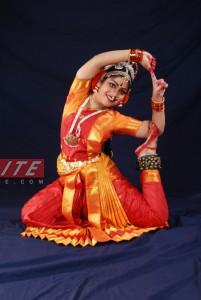Sarvani Yadavalli, an engineering graduate from BITS, Pilani and an ICCR Empanelled artist in the field of Kuchipudi dance, started to learn Kuchipudi, a classical dance form of Andhra Pradesh from great gurus like Padmasri SobhaNaidu, Smt Seetha Nagajothy and P Nagajothy, Sh. Vedantam Radheyshyam and Rajaram garu who marked their impression in Kuchipudi dance form.
Honored with the national Nrithya Shiromani Award by Utkal Yuva Sanskrutik Sangh and the titles ‘Nrithya Bharathi’ and ‘Nrithya Vilasin’, Ms Yadavalli tells Asian Lite that dance, for her, is a passion, and the art that is driven by passion attains the fineness with wholesome purity
AL: You’ve performed various forms of Indian classical dances in other countries also? How have been the responses from the members of these nations?
Sarvani: Fortunately, I had an opportunity to perform Kuchipudi dance style before different nationalities. Indian classical dance mainly depends on the mythological stories and performing before the audience of different nationalities is always a challenge. Kuchipudi came from dance drama tradition and many aspects of the dance form depict different mythological characters. Understanding the story behind the dance piece is essential to appreciate the dance form thoroughly. I always make sure that I explain whatever I do and I find the response of the audience very motivating. It is very nice to see other nationalities appreciating Indian classical dance and I am very honoured that I am acting as a medium. Sometimes, the audience come up and say that they got the feel of Indian culture and start asking related questions after watching the performance. I remember an incident in Malaysia where my performance was planned for 30 minutes and the audience wanted to know more and I extended my performance to an hour explaining various aspects of the art form and showing them the full repertoire. Sowing the seeds of curiosity in the audience to know more about the art form and the Indian stories satisfies me utmost as a dancer. I make sure that all my performances have a good balance of nritta(footwork) and abhinaya (expression). Sometimes, they enjoy the nritta- the pure footwork and various postures, formations in the dance form. Recently, I have been receiving wonderful feedback for the choreographies based on fusion music which makes the audience of other nationalities connect more to the Indian classical dance.
AL: You’re an engineering graduate from BITS, Pilani and an ICCR Empanelled artist in the field of Kuchipudi dance. How did you get interested in dance?
Sarvani: It all started with my mother’s persuasion. My ancestors were very famous in the arts field. My great grandfathers Yadavalli Nageswara Rao guru and Yadavalli Surya Narayana guru ruled the stage. My mother noticed the sense of rhythm and the skill of simple expressions in me at a very young age and initiated me into dance training when I was five years old. It was completely her persuasion at the beginning. Though, I used to grasp well in the class but didn’t realise the greatness till my sixth year of learning. Once, I happened to attend a workshop in my sixth class under Sri Sudhakar guru who is the guru of Sri Rajaram guru (my first teacher). It was during this workshop when my thoughts changed. I started realising the perfectness of the art form and started enjoying it. I started to understand the essence of the classical dance form and realised the great satisfaction that one gets during the training of dance. From then onwards, I started to look out for gurus to receive advanced training. I am lucky to get good gurus during my journey of dance.
AL: To some, dance is a hobby and for some, it’s an art. What is it for you—hobby or an art? And why?
Sarvani: To some, dance is a hobby and to others it is a form of art to be pursued. But to me, it is a passion. I am driven by passion and strongly believe that the art that is driven by passion attains the fineness with wholesome purity.

AL: How has dance helped you to evolve as a better person?
Sarvani: Kuchipudi is deeply rooted in technique and has to be learnt in a very structured way. Learning the dance form in guru-shishya parampara, developed discipline and gave me an opportunity to learn not only dance but also various skills related to dancing. Dancing improves patience, concentration and acts as a de-stressing agent. The skills I have developed through dance gave me great support in my studies and social life as well. The team building involved in dance helped me to improve my communication skills. All this helped me to have focus in life and achieve the goal in a structured way.
AL: How are Indian classical dances different from Western dances?
Sarvani: Both Western and Indian classical dance styles reflect the social, cultural, religious tradition and values of their root cultures. Western and Indian dance forms are two different genres. The basic posture of ballet for example is against gravity whereas Indian classical dance forms basic posture is towards gravity. In Western dance, physicality is stretched to its limit. In Indian classical dance forms, there is exploration within.
Abhinaya (expressions) plays an important role. Apart from its clear impact on dramatic tradition, it is also used as an integral part of all the Indian classical dance styles, which all feature some kind of a mimetic aspect to certain compositions.